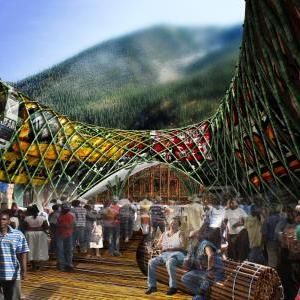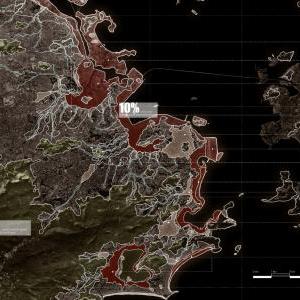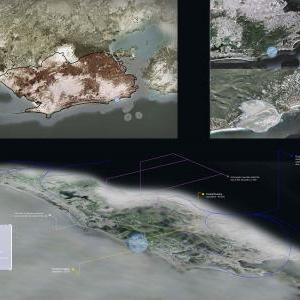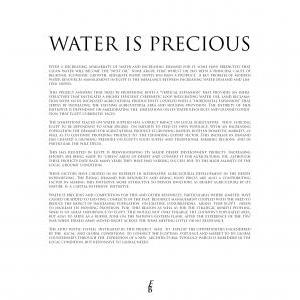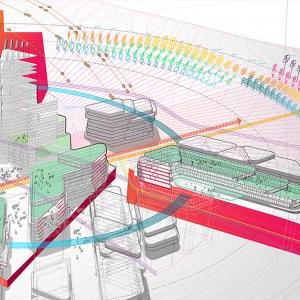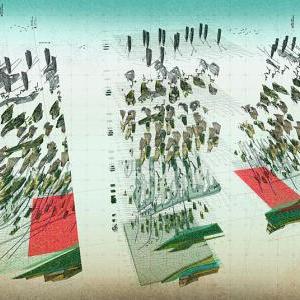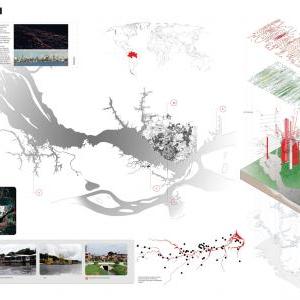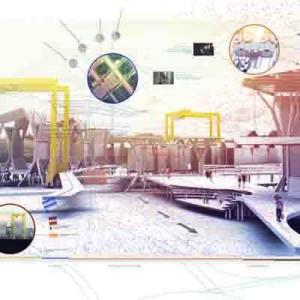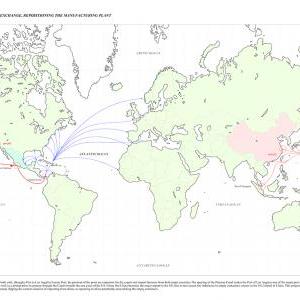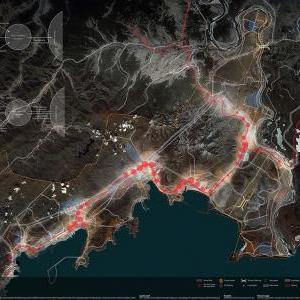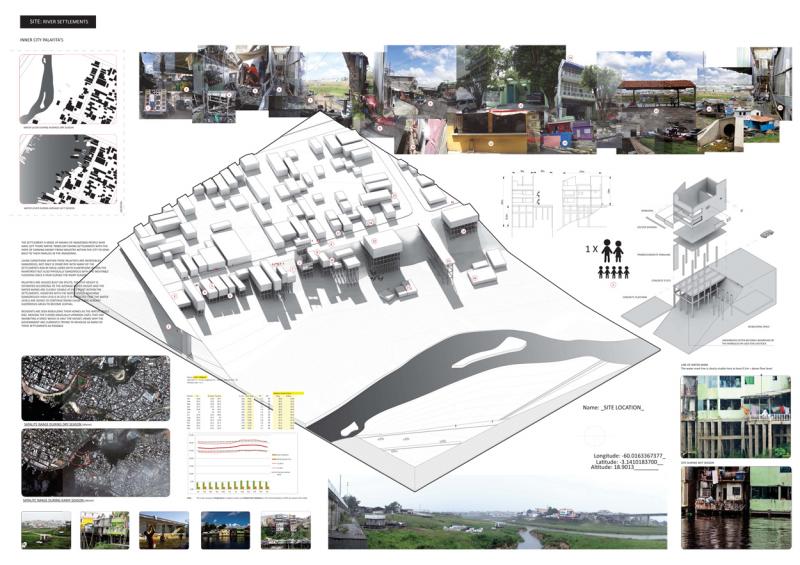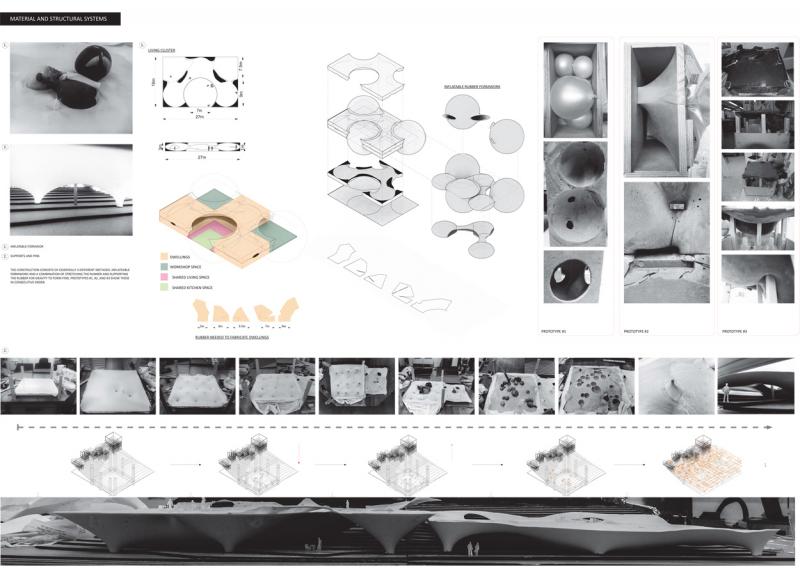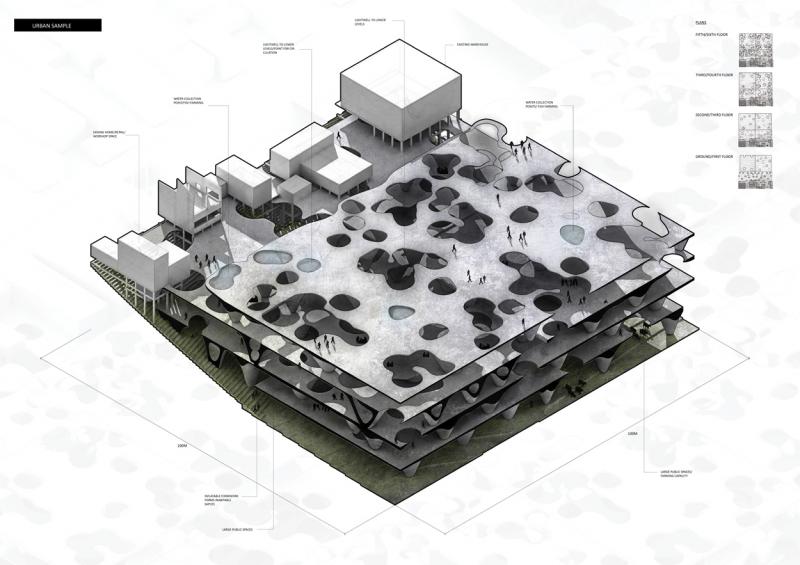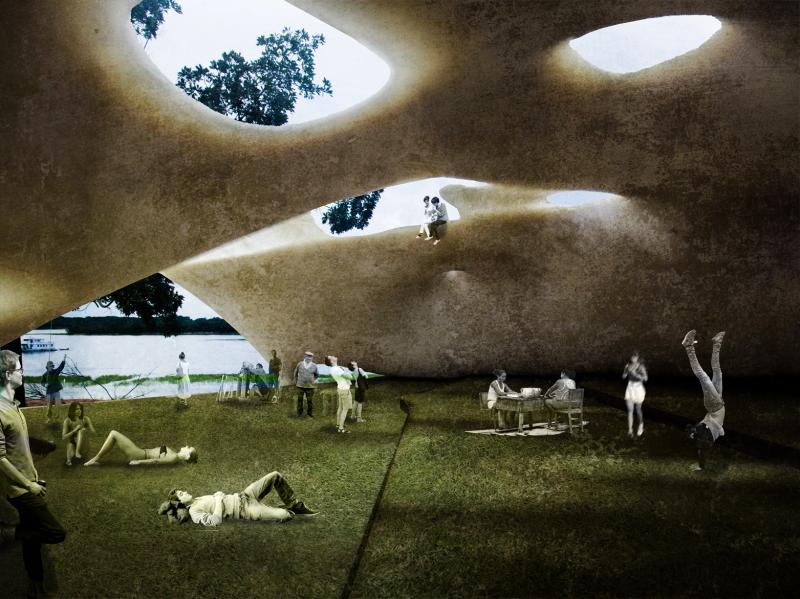Diploma 16 is continuing its exploration of emerging design and fabrication techniques capable of addressing the complexity of adaptation to new environmental contingencies. The unit firmly harbours the idea that experimentation in the design and material manifestation of our physical environment is critical to sustaining our world.
We believe in a ‘no fear of failure’ ethos through a vigorous experimental design culture that exploits the projective capacity of both architecture and planning. We are pursuing grand architectural and urban visions with the intent to engender a fertile ground for invention in relation to regenerative development. The work continues to explore of our changing environmental, social, economic and cultural conditions as a springboard for innovative production models, ecological urban and architectural design, and visionary tectonics.
The Super Order agenda experiments with the city as a design project. The brief proposes the establishment of new socio-economic, environmental and cultural orders as primers for resilient and self-generating urban morphology. This prototypical urban form and structure, intended for tabula rasa conditions, is underpinned by the belief that new forms emerge from the discovery of new materials coupled with the development of design, fabrication and production tools. We deploy new material in the pursuit of cultural and biome-specific public space and urban fabric, where morphology and a time-based metabolism (in)form an urban ecology.
Despite the current economic climate bordering on a global depression, new model cities are being designed and constructed around the world. The unit is searching for a detailed understanding of how these projects impact the environment. How can questions pertaining to technology, nature and human factors be balanced in the formation of an overall architectural ecology? How can architecture and planning give more back to our natural environment than it takes? To answer these questions Diploma 16 produces work that is given a material and tectonic expression focusing on the new form of civic (social) space, carbon-neutral (technology) performance, biome (environment) specificities, and the new architectonic (design) order.
Unit Masters
Andrew Wai-Tat Yau
Jonas Lundberg
Supported by
Andrea Marini
Kengo Skorick
Michael Kloihofer
Structural Consultancy
AKT
Imperial College
Special thanks to
Brett Steele, Marilyn Dyer, Belinda Flaherty and all the other members of the AA community who have supported us throughout the year. Also special thanks to the Technical Studies team and our guest critics for their invaluable contribution.
Suzan Ucmaklioglu
Borracha e Palafitas: Rubber in the Palafitas
The primary site for this investigation is in Manaus the capital of the Brazilian Amazonas with the key site being one of the many small settlements along the river banks.
Manaus is situated on the margins of the Amazon river in a location as close as possible to a ‘geographic centre’ of the Amazon rainforest. Its location provides huge opportunities for economic development with strategic transport routes along the Amazonian rivers. The key area of interest is the city’s continuing growth, encroaching along the river banks which infiltrate the forest, the few remaining rubber plantations, and the areas of fertile black soil dispersed throughout the rainforest. This project will deal with the rejuvenation of Manaus’s rubber industry through a new city typology which allows for small settlements along the river to obtain acceptable levels of human comfort as a self sustaining system capitalising on potential sources of energy such as solar radiation, wind energy and kinetic energy of the Amazonian river currents. (By remaining in a fixed location for a limited amount of time this typology will leave very little footprint on the environment with any trace of human inhabitancy being toward new black soils of the 21st Century.)
Through various parallel studies into light, wind and kinetic energy patterns a set of parameters is developed for the strategic preservation and regeneration through growth of the settlements, in order to satisfy human comfort and utilise potential energy sources.
In order to preserve the current housing along river banks the infrastructure of the new system will allow control over the rate in which the water levels rise. These ‘permanent’ areas of infrastructure will be porous enough to allow wind through the settlement for ventilation and located in areas which will allow the capitalization on certain currents within the river for kinetic energy. Water collection points will be at various places within the overall structure allowing areas of water to collect and remain throughout the dry season.
This new settlement is consisting of various different locations for public space and multipurpose use, located to the bottom of the structure, shaded during dry season and relocated to higher points of the structure as the water levels rise. The expected outcome allows for the preservation of the fishing community lifestyle on the banks of the river while allowing for the integration of emerging social classes within a system suitable for the tropical ecosystem specific for the rainforest context.
Providing acceptable levels of human comfort while generating self-sufficient energy without negative impact on the environment. The implementation of the system and the infiltration into the rainforest fabrics could therefore instigate a positive reduction in illegal activities currently so rife.
